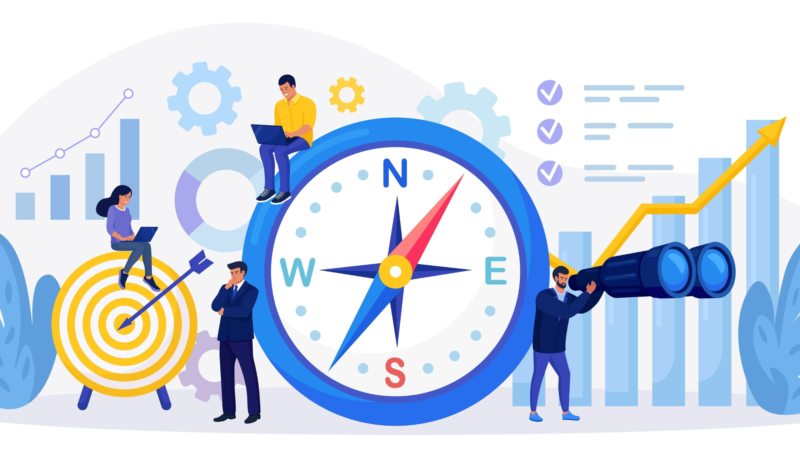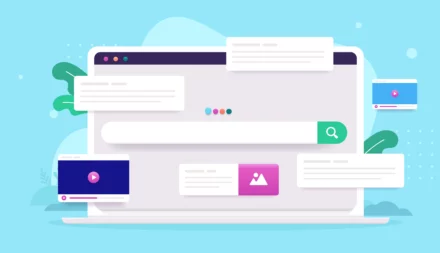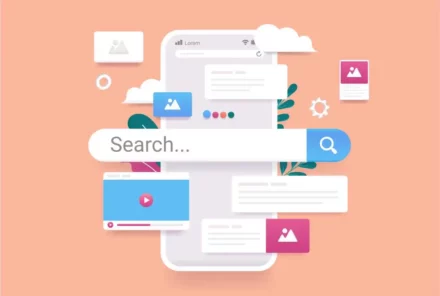Attribution in 2023: How to Navigate the Cookieless Future

Is your business ready for Google’s impending cookie apocalypse?
On our recent webinar, Attribution in 2023: How to Navigate the Cookieless Future, our CEO Chris Liversidge was joined by Claud Monro (Client Success Director) and Pete Allcock (Senior Software Sales Executive) to explore some key questions, including:
- What are the pitfalls of using GA4 for the cookieless future?
- How can I get buy-in to switch to a cookieless solution?
- How can we achieve true accuracy across our Paid Media activity?
You can watch the webinar on-demand here, or read on to hear what they had to say.
Setting the scene – the current state of digital
Chris opened the webinar with a broad update on the current state of things in digital marketing.

Things have changed quite a lot in digital marketing over the last couple of years. But it’s also accelerated with all of the discussion around the impending demise of third- party cookies.
Will Google’s third-party cookies replacements happen and when?
So, that relates directly to Google Chrome for those who are not aware.
Google Chrome is 60% of the browser marketplace, globally. It has quite a high percentage as well in key markets like the US and UK. So, what Google decides to do with Chrome is important for advertisers because the majority of ads are going to be served to people using the Chrome browser.
Now, Google has tried to sunset third party cookie usage from Chrome – which basically means switching to default blocking them – a few times. And we are now on our third iteration this year.
Google’s current plan is, by Q3 this year, all of the API and tools that they’re making available to replace third party cookies (which we currently have access to play around with) will go live and we’ll be able to start using them to buy ads. Now, clearly, we’ve heard that before. So, there is a question mark about is it going to happen?
W3C say Google Topics is not compliant
And to set the scene on that a little bit, some of you may have noticed that there was commentary from the W3C last week.
They have a group called the Tag group which is the technical group that makes recommendations to the W3C.
For background, the W3C essentially set standards for the internet around things like HTML and CSS. And they came out to say that one of the proposed technologies being put forward by Google, which is called Google Topics, is not privacy compliant, in their view.
You can’t opt out of Topics as it’s been proposed by Google. And therefore, they say that it is not fit for purpose for the privacy-first Chrome browser that Google is trying to promote.
So, there is definitely going to be some rumblings about that going forward.
AdTech has never been more fragmented
And, the wider ecosystem looking outside of Chrome matters because that’s the remaining 40% of the browser market. Broadly speaking it already blocks third party cookies and most of you on the webinar will have noticed that the effectiveness of your ads has definitely been impacted over the last couple of years.
Third party data is used to help stitch together what is happening in various technology silos – so in our diagram below we have put together a collection of the types of data silos that exist on the left including:
- Different types of AdTech
- Media networks that we can place ads on today


The problem is they are siloed. They all have their own IDs and inventory. And they do not have a uniform way to communicate to each other.
So, third-party cookies are not helping us to stitch together what’s actually going on a situation that is certainly problematic already. And it’s going to get worse when that 60% disappears.
And I’d argue for many of these platforms, you need to take an alternative view, probably almost straightaway.
A question around TikTok
There are lots of question marks about TikTok.
There was another proposal to see if that might be banned for big parts of the US market this week.
It’s obviously already banned in places like India and there’s a big privacy question mark around TikTok.
The Chinese government has to sign off on any data privacy plan that they have proposed to the US.
So clearly, that’s not going to be a fantastic amount of security for us as advertisers.
And they are pricing aggressively right now. So, it’s about half the price on TikTok on a CPM basis compared to the same sort of ad on Instagram Reels. So, I would expect to see TikTok usage continue throughout the year.
Retail media networks are emerging
We’ve also got another social network that we need to consider more deeply – and you might be aware of it if you’re a retailer – which is the retail media network.
So, the bottom left little cloud on the diagram above is a placeholder for the growth of retail media networks.
What that is, is essentially a retailer – so Walmart for example have done a big deal with a technology supplier – making their own inventory available to advertisers to place ads on monetizing their own sites. Allowing you to place ads against people who are ‘in market’ and already looking to make a purchase.
And of course, they’re trying to enrich that with the information they have about them as a Walmart customer.
People like Kroger, have similar schemes signed off recently that will be coming available as inventory for us. We have the likes too of Nectar in the UK of course already.
You can connect to them through DV360 and other DSP platforms, so we’d have to consider retail media networks more seriously as they’re a high growth area.
They’re also quite cheap as a result because they’re quite new.
And, also, Amazon has released a new product. Which white labels rolling out a retail media network of your own.
So, I would expect to see a long tail of retailers come into market over the course of the year. And that’s new inventory, new opportunities – but of course also new data silos that we need to try and connect across.
So, I guess in my warming up for the fireside, I do believe that we’re at a point where it’s impossible to ignore thinking about how to run your marketing in a kind of cookie free environment. Because they’re not really effective across these different areas. They’re going to get worse over the course of the year.
Today, you could argue they add very little value and they are expensive – because managing third-party data adds a huge amount to our ad costs.
At this point Chris opened things up for a broader discussion on some of the key issues.
The issues when you have different sources of the truth


Claud, you are involved with our customers. You understand what happens when someone comes on board and has to start dialogues within a business about using a different source of truth.
Can you talk to me a little bit about your experiences there? What works and how you can start thinking about this problem?


Yes. With most of the clients that I work with the conversation always starts off with – what data do you currently have and what is the quality of that? And generally, unfortunately, it’s terrible.
They’re relying on attribution models that have just Last-Click, or random numbers that they’re applying to that, that aren’t fluctuating in real time.
So, for me, the most exciting thing is actually having that initial conversation with the client about what is it that you want to see? What is it that a true attribution model can do for you?
And quite honestly, it’s a very simple answer. 90% of the time, they just want to see all of the information. They want to see the customer journeys and they want to see everything in one place.
And with some clients, it’s just incredible how little information they have about their own clients and about the paths.
This my favourite slide.


It’s just so simple, because it shows exactly what a good attribution model is going to give you.
And again, in this particular example, we’re not talking about a very complex AI model. We’re just talking about a very simple customer path and how the different attribution models tell you a completely different story.
So, if you’re looking at Last-Click through Paid Search, all of your credit is just put on that last piece of the journey. And if at the beginning, it’s all put on the first.
But if you take that journey at the top and just draw a line through it after the display ad impression, all of a sudden that tiny little part of the journey becomes the Last-Click and that becomes everything.
So, attributing everything to what is in fact the smallest piece just because a client came in on their mobile phone or came on their computer broke that journey.
And so, to actually use that data and then see the full journey. And also have customers realise, that changes my entire view on our budget, where we should be putting our marketing dollars and what we do.
Moving away from last or first touch can be disruptive









Pete, if you could expand a little bit because it’s quite disruptive.
If you’re in a business – and you’re reporting on the basis of either first touch, last touch or some combination – it’s quite disruptive to then say, ‘that’s wrong’.





It’s starting off from a very difficult position, as a marketer. We spent a long time accepting that this is the way that we operate and what we use.
Cookies have been there for 20 odd years now.
It’s a tool that was developed to track an individual device and individual browser and to be honest, at the time, it did a pretty good job.
So, what we see is most people will find themselves sitting in the Last-Click structure, so the middle of the three routes on this slide. Another reason that that’s so beneficial, and the reason it kind of makes sense to sit there is because it aligns with the financials.
It shows you that last interaction to the transaction, and it all seems to align. But it’s missing out on the early touchpoints which is where you could actually be saving budget, lowering your CPAs and that’s the key.
It’s progressing things and moving away from that Last-Click structure. Because if everyone is operating in that same market, it becomes a very high-capacity market.
So, it’s about getting buy in from the wider team to understand the way we’ve been working for so long. That the models that we’ve been using, actually are fundamentally flawed because of a technology like cookies. And we’ve got to move away from that structure. And start looking at the entire journey which can be a big change. Claud, I’m sure will attest to speaking with various stakeholders.
On the sales side, it’s often numerous meetings with different stakeholders, giving them the different proof points. Taking them through that explanation to get them to understand the value that we’re going to add.
Related: How to Justify Your Marketing Spend to Your CFO









Do you find much pushback when you have those conversations?
Do you find people are reluctant to accept the analytics they’re looking at today for digital marketing is wrong?





I think it’s a mixed bag.
You get a lot of people who know that something’s wrong; they know their AdTech reporting is incorrect.
It’s about accepting that there’s a solution to that.
I think a lot of people feel that it’s almost too good to be true – that there’s a solution there that does it because nobody else has been there and completed that.






So with many conversations with clients – when we’re just onboarding them and where we’re looking at their metadata – they say Facebook generates all of this revenue for us.
We know that’s not true but that’s what Facebook tells us.
So, it’s become expected.
And then when you show them these incredible differences, it’s like a light goes on.
How can I possibly be reporting 10 times revenue that is actually coming in through my Facebook Ads?
Transacting paths are significantly longer with our patented AI









You both mentioned that previous slide was your favourite one. This is my favourite.
So, this is from our client base, and it shows a kind of nice, average increased journey path length.


Claud, can you talk us through this a little bit and tell us what we’re looking at here? What it means and how you use that as a tool to communicate with the business.
Related: Everything Marketers Need to Know About GA4






This is a fantastic slide.
It’s often at the beginning of the onboarding of the client that I’ll use this slide and I’ll show that we’ve been ingesting their data.
We’ve been stitching it together – and this is what’s happening.
We’ve basically seen your paths increase two to three times. And that’s incredible. And we’re talking about converting paths. So, this is actually a path that ended in a conversion.
And what this shows clients is that they are actually working on 20% of the data. They’re working on bad data so they don’t understand the customer journey.
Related: Poor Quality Data is Hurting Your Attribution. Here’s Why…
I just recently had this with a client, where 30% of their journeys that ended up through an affiliate actually started with Paid Search.
So, what that tells us is that they’re actually bringing in this customer at the top of the funnel and then they’re losing them to an advocate that’s just giving them a coupon or a lower price.
So, those kinds of insights just come out of good data. And there’s hundreds of them that we’ve had with clients.
But ultimately understanding that client journey and understanding where they actually come into the funnel and most clients are 50% wrong on that.
They really don’t understand where the customers are starting off and what the natural progression is – and how important it is.
If a journey starts with a direct hit to the website, but they don’t purchase and then they come back and they do a search and then five or six other touches – that direct hit is still the most valuable.
I mean, they somehow knew your brand. They visited the site, they saw something and then they just went off and did a little bit of value comparison.
But still whatever you’re doing with that direct campaign is the one that got in a new customer.
Related: How to Ensure Your Top of Funnel Marketing is Fairly Attributed









It feels very axiomatic.
It feels very simple, when you frame it this way.





One of the stories that we hear on a regular basis from a sales perspective is a cannibalisation concern. And as mentioned, you’ve got affiliates.
Just capturing that discount code or similar but that can apply across different tools as well. So, you could have a fantastic organic journey that someone’s going through and you’re spending at the end of the funnel when it really isn’t required.
And there are different use cases for that. We have reports in the system that show individuals who are introducers – or campaigns and channels that are introducers (or those that are influencers) – and those that then go on to drive the final conversion.








This to me is the simplest picture, the funnel.
As soon as you’ve got a true path, you can get higher up that funnel and it gets cheaper.
I mean it’s so simple.
If you don’t have that information, you’re working on Last-Click.
You’re competing down at the bottom of the funnel with everybody else and paying top dollar for people that are not necessarily engaged with your brand.
Whereas, if we actually attract them at the top of the funnel and we know that journey. It’s incredible.









I think what’s interesting about the visualisation of how much longer the paths are it helps with communication.
I think it’s really important.
Sure, you can have great technology and you can have better performance, but if you can’t communicate what you’re doing and what that means, it’s very hard to actually start that process with your CFO or your finance function or maybe your Head of Marketing – if you’re looking at this and you’re in the trenches and you’ve got to do optimisation.
I mean the environment that we’re in at the moment as advertisers is really intense.
Probably more competitive, I think, than it’s ever been. CPCs have been driven up by some of those marketplace trends that I highlighted earlier.
But also, changes like some of our tools for optimisation being removed from us by Google Ads, so we can’t be quite as granular as we used to be.
It is almost like it’s in their favour which is one of the charges thrown against Google Topics, for example. There’s only 350 topics available. And so, you’re driving the auction volume up which drives up your cost per click.
And I think the other thing is, if you’re operating to a Last-Click model, you’re seeing the same essentially as 80% of the market. Because the thing that we’ve evidenced with all of our work around Corvidae and using AI instead of cookies is it’s actually the cookies that are the problem. Not the model necessarily.
It’s nice that you get a model off the back of our stitching process, because it is valuing if people are influenced by an event, but the important part is the stitching.
So, if you’ve only got 20% of your data actually accurate, it doesn’t matter if your model is First-Touch or Polynomial. Or you use clever Data Science to create a model, you’re still going to end up with something that gives you something very similar to Last-Click because those are the only transactions it’s really probably seeing.
So, Google is not incentivised to change that situation with Google Analytics. It does a little bit with Signals, but not really.
Adobe seems to be asleep at the wheel and we haven’t seen any innovation coming out of there. They should have been all over this 10 years ago. Anyway, that’s for another day.
So – what are you options in all of this?









You know, you can use something like LiveRamp which is specialist in mobile but has the same cookie dependency.
There isn’t another technology that would let you just solve the problem together first. And so, you’ve got all this pressure of Last-Touch which is essentially what everyone’s using. And you’ve got increased auction volumes being driven by the suppliers.
If you can get earlier in the funnel you have less bids to bid against. And so, your auction prices go down. We have got case studies coming out of our ears to highlight this. I think it’s difficult for customers to get to the endpoint of – I’ve got to talk to finance, then I’ve got to implement the technology and it involves tags that might take a little bit of time.
I’m nervous about that. I’m going to have two sources of truth while I get up and running. And then after that, I’m going to have some and I’m going to have to try and evidence that those changes are better than the changes I’ve been making before.
So, there is some of the interesting stuff we’ve been doing with our customers in terms of feeding automation in. Could you talk a little bit about that process and the steps you’ve gone through with customers, Claud?






I start off with kind of a big ‘aha’ moment for our clients.
When we talk about attribution models, and they look at the First-Click and Last- Click they’re really looking at an overlay on the data. And it’s not smart. It’s just applying the rules to the data.
Whereas when we get into this AI model we’re actually looking at multiple points.
Each path is actually being finetuned and getting smarter over time. That’s a big realisation that when you move to an AI attribution model, it’s not just making a decision and applying it and saying this is what we’re going to use going forward.
It’s actually creating a learning environment where the more data that you get, the smarter it becomes. As we weight those paths we give certain weights to certain preferences.


We may have an identical path which starts off with Paid Search which goes to a direct visit through organic search. But those weightings will be very different based on the customer’s interaction on those pages.
So, it is important to understand our attribution model is advanced, getting smarter over time and giving us real time insights. As opposed to just saying I’ll go with number two attribution model.
And the next thing is how do we prove that?
Obviously, pulling out those models and those conversion points and changing their bidding strategy. Getting them the higher up the funnel, utilising that data and that’s where AI driven attribution models are so powerful is because we can look at things like this.


This is such a simple graph, but what it tells me is:
- this is where you are
- this is the campaign
- this is what it’s costing you
- this is how much green space we think is still available
- this is how you can increase your budget and how it’s going to last at length
And we have some experimental controls that mean you can actually change and put in some different factors.









The other thing is, that you don’t need to jump straight to that.
So, what I really like doing with our customers is moving them sort of incrementally through that process.
Paid Media account managers get very nervous for good reason about how we allocate budgets.
Suddenly we’re switching everything over to a new model. It’s not what people want to do.
And also, the reality of Paid Media is there are some smart algorithms on the Ad Tech side.
So, you can look at Google’s move to AI assisted bid models which they’re essentially enforcing across the board. And what I love about what we’ve been doing with the customer base is moving them to simplifying it, allowing the attributed conversions from Corvidae simply to be plugged into Google Ads.
And then you can run an incrementality study. So you literally run it alongside Google Ads own picture of what conversions look like. And you have a score of how much more revenue you’re making or how much media spend you’re saving. And you can then just simply switch over campaign by campaign.
What I want to call out is that a lot of people worry about that they have to just flick a big switch. And day one, I go completely to this other system that I have to trust and wait forever.
And that’s not how you’ve been approaching it, which I think is really fascinating.






It’s very simple to set up a secondary conversion. So, once we put it in and we look at it doesn’t change the bid strategy in real time.
But we are able to compare a number of campaigns saying if we chose this model, what would happen?
And that gives clients incredible confidence to move forward. And once they see that they’re getting better results, obviously, they want to move to that new bid strategy – and you just move it from a secondary conversion point to the primary.





It’s worth mentioning to clients that we do offer a proof of concept as well to stand by our technology, to stand by what we believe in.
We’ll onboard you onto the system. We will set up the AI and get the models running.
We’ll also get the data in there and start to give you an output and changes you could actually action before you get to live services.
Need to learn more? Download our eBook, Is Cookie-Free Attribution a Myth?, to discover:
- The main reason cookies are flawed
- How to fix your 80% broken data
- Our unique patented technology – and find out how it completely replaces the cookie
Is Cookie-Free Attribution a Myth?
Own your marketing data & simplify your tech stack.
Have you read?
I have worked in SEO for 12+ years and I’ve seen the landscape shift a dozen times over. But the rollout of generative search engines (GSEs) feels like the biggest...
As you will have likely seen, last week Google released the March 2024 Core Algorithm Update. With it, comes a host of changes aiming to improve the quality of ranking...
After a year of seemingly constant Google core updates and the increasingly widespread usage of AI, the SEO landscape is changing more quickly than ever. With this rapid pace of...



